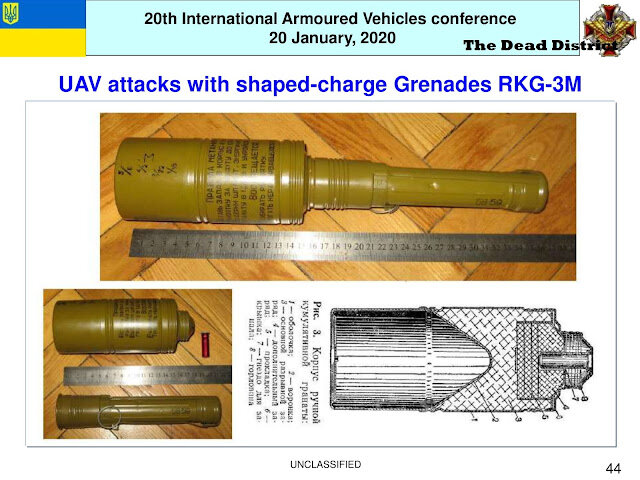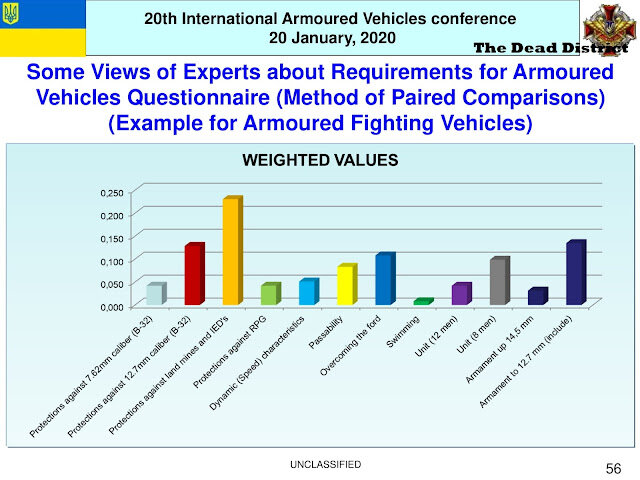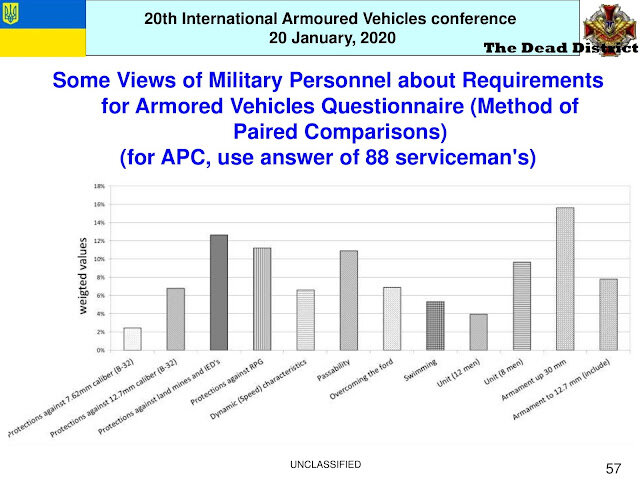You are using an out of date browser. It may not display this or other websites correctly.
You should upgrade or use an alternative browser.
You should upgrade or use an alternative browser.
Replacement for the T-72?
- Thread starter shin_getter
- Start date
- Joined
- 19 July 2016
- Messages
- 4,279
- Reaction score
- 3,464
Is there a genuine shortage of T-72? I cannot see it but possibly the available updated types are committed elsewhere. What can they do to bring unmodded T-72, to such a state they might be quickly available and more importantly, relevant?
- Joined
- 29 November 2010
- Messages
- 1,775
- Reaction score
- 3,479
looking at the list
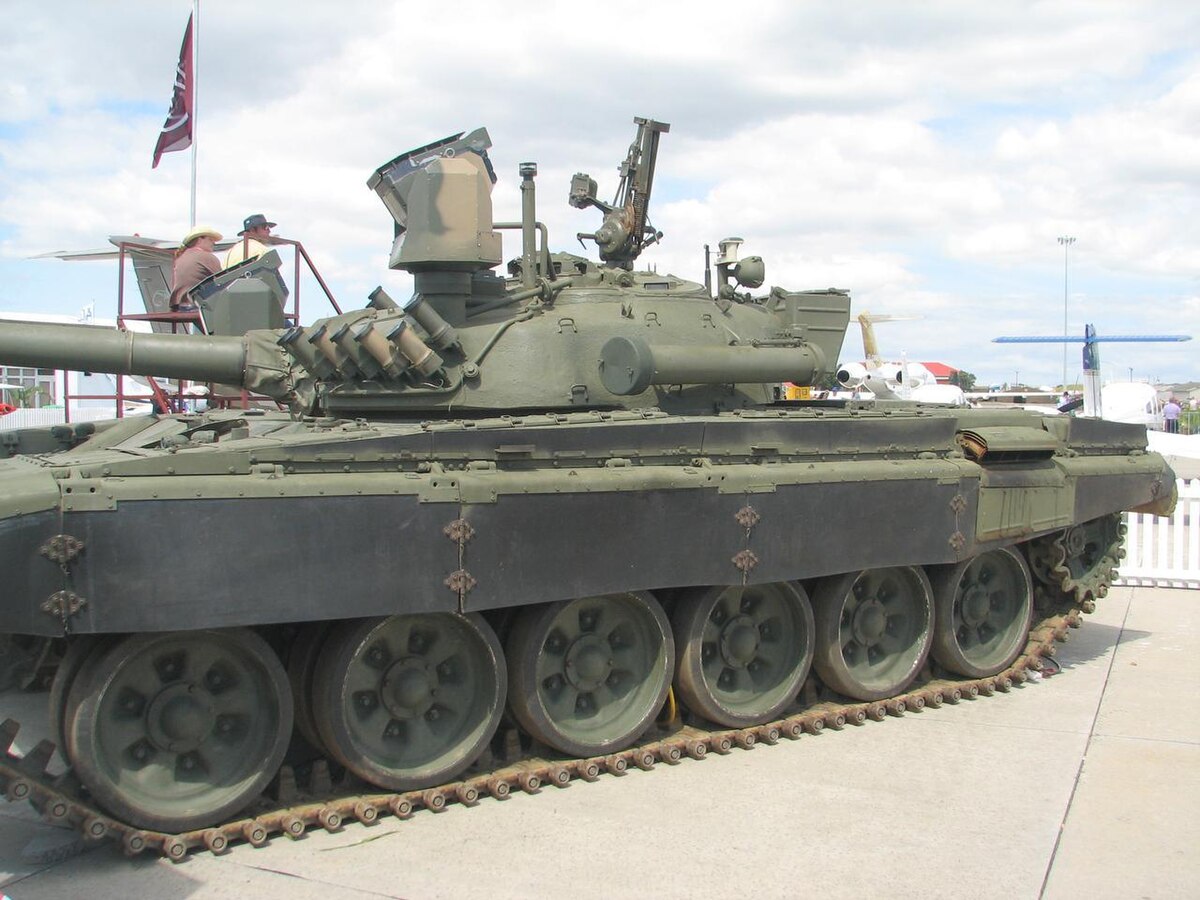
 en.wikipedia.org
en.wikipedia.org
Formerly eastern-block European countries like Bulgaria, Slovakia, etc: I can see most of them donating their T-72 stocks to Ukraine at some point, as long as they are promised replacements from other European countries or the US. i.e. M1 and Leopards to Poland, if Poland gives T-72s to Ukraine
Ex-USSR countries: There's just way too many T-72s there and I don't see them disappearing any time soon. But I see the T-90 as the most likely option for a replacement for those that are still on good terms with Russia such as Kazakhstan, Turkmenistan and Azerbaijan. Those like Georgia, not sure what they would replace them with.
India: same as above, too many T-72s.. but eventually I do see India just standardizing on T-90s and Arjuns.
Iran: same as above, but perhaps prioritizing on domestic tanks
Morocco: I was suprised to see them on the list, but I can see them retiring their T-72s at some point and using something American or european
Algeria: too many. but the T-90 is the most likely candidate for replacement
Sub-saharan Africa: There's quite a few operators, but many operating small numbers like Djibouti with less than 50. Although Sudan has many. I think its unlikely many of these countries have a pressing urgency to replace their T-72s. But if they did, I can see it being a two way competition between the T-90 and whatever China has on offer like the VT-4. China can be competitive here
Southeast Asia: Myanmar is likely to go Russian if anything, so T-90. Laos is a toss between China or Russian options. Malaysia probably wouldn't go for either if it had to again. I suspect India might make a hard push
Venezuela: likely T-90 if they had to replace anything
I also don't expect any 1 to 1 replacement in these scenarios either. Perhaps 2 to 1 or 3 to 1? maybe more so.

T-72 operators and variants - Wikipedia
 en.wikipedia.org
en.wikipedia.org
Formerly eastern-block European countries like Bulgaria, Slovakia, etc: I can see most of them donating their T-72 stocks to Ukraine at some point, as long as they are promised replacements from other European countries or the US. i.e. M1 and Leopards to Poland, if Poland gives T-72s to Ukraine
Ex-USSR countries: There's just way too many T-72s there and I don't see them disappearing any time soon. But I see the T-90 as the most likely option for a replacement for those that are still on good terms with Russia such as Kazakhstan, Turkmenistan and Azerbaijan. Those like Georgia, not sure what they would replace them with.
India: same as above, too many T-72s.. but eventually I do see India just standardizing on T-90s and Arjuns.
Iran: same as above, but perhaps prioritizing on domestic tanks
Morocco: I was suprised to see them on the list, but I can see them retiring their T-72s at some point and using something American or european
Algeria: too many. but the T-90 is the most likely candidate for replacement
Sub-saharan Africa: There's quite a few operators, but many operating small numbers like Djibouti with less than 50. Although Sudan has many. I think its unlikely many of these countries have a pressing urgency to replace their T-72s. But if they did, I can see it being a two way competition between the T-90 and whatever China has on offer like the VT-4. China can be competitive here
Southeast Asia: Myanmar is likely to go Russian if anything, so T-90. Laos is a toss between China or Russian options. Malaysia probably wouldn't go for either if it had to again. I suspect India might make a hard push
Venezuela: likely T-90 if they had to replace anything
I also don't expect any 1 to 1 replacement in these scenarios either. Perhaps 2 to 1 or 3 to 1? maybe more so.
Physically, you could see a mental shift in design to a Western type of design, with better stowage and still using an autoloader and maybe even a reversion to a larger hull, instead of trying to jam it all into a small hull.
shin_getter
ACCESS: Top Secret
- Joined
- 1 June 2019
- Messages
- 1,109
- Reaction score
- 1,493
Would Russia have enough production to sell T-90s to other nations consider its need to refill its own vehicle stock in the near future? Given the limited improvement of T-90 would it even be attractive? Actually, would Russia even build T-90s or T-14s with actual war experience informing designs, and economic/industrial constrains prevent production as normal? Will there be a clean sheet design cheaper than T-14 but correcting T-72/90 flaws? How long would the war have to drag out before major tank modification programs gets undertaken?
---
On that note, it is one thing to joke about T-62s, but the thing is that it is unclear whether it actually such a bad tank. If the tanks is used to duel other tanks in frontal engagement it would be quite poor, but in fights against infantry and artillery? The relevant characteristics are probably good sensors and gun stabilization for fast engagement and, all round HE/HEAT protection.
The assumptions that drove MBT development were found to be not very relevant to modern conflict:
Assumptions behind classical MBT designs:
-Frontal engagement against other tanks is the common threat, with tank duels are fairly common
This war shows that even given a symmetrical land focused conflict without excessive intervention from air supremacy from other side, tank fights rarely happen, with the greatest cause of losses coming from artillery even with sub-par long range precision capability on both sides. Large numbers of flank shots and infantry engagements are also seen.
This have implications on optimal tank design.
nations gangs can motorize their forces. Full mechanization is affordable quite early within the cold war context, the only question is quality of vehicle being used. It is normal for armies to have more tanks than man, if said army keeps old equipment around.
As such it is actually unfair to see high armor and vehicle attrition as anything particularly serious compared to losses of manpower or actually scarce weapon systems like aircraft/air defense/modern electronics. In a world where tanks is relatively cheap while manpower is almost completely inelastic, you'd expect tanks to be useful and used when it offer even very tiny advantages over light infantry.
The abundance of anti-tank weaponry is also a given, as even even backwards economies like Iran or Ukraine can produce effective systems in sizable numbers. If the combatants have budgets within comparable order of magnitude and take warfare seriously, anti-tank shortage should not be expected to happen, the only question is quality of weapon supplied.
Not sure exactly what tank parameters optimize man power - combat effectiveness equation. I think reduction in logistic tail and crew counts is what would best optimize man power. It is not about combat power per tank, but combat power per man with logistic tail added.
---
On that note, it is one thing to joke about T-62s, but the thing is that it is unclear whether it actually such a bad tank. If the tanks is used to duel other tanks in frontal engagement it would be quite poor, but in fights against infantry and artillery? The relevant characteristics are probably good sensors and gun stabilization for fast engagement and, all round HE/HEAT protection.
The assumptions that drove MBT development were found to be not very relevant to modern conflict:
Assumptions behind classical MBT designs:
-Frontal engagement against other tanks is the common threat, with tank duels are fairly common
This war shows that even given a symmetrical land focused conflict without excessive intervention from air supremacy from other side, tank fights rarely happen, with the greatest cause of losses coming from artillery even with sub-par long range precision capability on both sides. Large numbers of flank shots and infantry engagements are also seen.
This have implications on optimal tank design.
If I may, it appears by the footage I've seen thus far, that a great portion of Russia's armour losses has to do with poor tactics as much as anything. The the amount of man-portable anti-tank weapons supplied by the west is unparalleled. The seeming saturation of anti-tank weapons in the hands of the Ukrainians would undoubtedly mean the death of any type/make of MBT, be it T-72 or Leopard 2 or M1 for that matter.
Almost every piece of footage I've seen of Russian armour being taken out clearly appears to lack infantry support so as to clear and neutralise these vast numbers of Ukrainian tank hunting teams - especially in urban areas.
The lack of infantry is the new normal. A tank can be built and put into mothballed for decades and still pulled back for use. Infantry has to be paid, and paid quite a lot and have additional cost the economy in lost manpower and there is political problems. In ww2 motor vehicles were rare and only elite formations can supply everyone with motor transport. In the modern era, just about every individual has their own motor vehicle and even the poorest ofHaving said that IMO many miss the forest for the trees when it comes to attributing the causes of T-72 losses. It has been pointed out that drone directed artillery accounts for upwards of 50% of all armor losses among the Russians and APS systems are not at all suited to handle that. And issues regarding the losses and damage caused by ATGM teams are more due to insufficient infantry and armor cooperation, often a result of a lack of infantryman to cover the tanks. The Russians have an acute shortage of infantry, the VDV especially falling short of adequate numbers of dismounts to help their BMD's.
As such it is actually unfair to see high armor and vehicle attrition as anything particularly serious compared to losses of manpower or actually scarce weapon systems like aircraft/air defense/modern electronics. In a world where tanks is relatively cheap while manpower is almost completely inelastic, you'd expect tanks to be useful and used when it offer even very tiny advantages over light infantry.
The abundance of anti-tank weaponry is also a given, as even even backwards economies like Iran or Ukraine can produce effective systems in sizable numbers. If the combatants have budgets within comparable order of magnitude and take warfare seriously, anti-tank shortage should not be expected to happen, the only question is quality of weapon supplied.
Not sure exactly what tank parameters optimize man power - combat effectiveness equation. I think reduction in logistic tail and crew counts is what would best optimize man power. It is not about combat power per tank, but combat power per man with logistic tail added.
Last edited:
My quick analysis/speculation:
-
Algeria – Probably no changes for foreseeable future

- Angola – Ditto above

- Armenia – Ditto above

- Azerbaijan – Ditto above

- Belarus –Ditto above

- Bulgaria – I have heard some murmurings that they are seeking M1 Abrams

- Czech Republic – Expect to be replaced by more Leopard 2s

- DR Congo – Probably no changes for foreseeable future

- Djibouti – Probably no changes for foreseeable future

- Ethiopia – Probably no changes for foreseeable future

- Georgia – Given they were only relatively recently upgraded to T-72 SIM-1 variant probably no change for foreseeable future

- Hungary – I have heard some murmurings that they are seeking M1 Abrams

- India – Expect to remain in service but go through progressive updates

- Iran – Probably no changes for foreseeable future

- Iraq – Probably no changes for foreseeable future

- Kazakhstan –Probably no changes for foreseeable future

- Kenya –Probably no changes for foreseeable future

- Kyrgyzstan – Probably no changes for foreseeable future

- Laos – Probably no changes for foreseeable future

- Libya – Probably no changes for foreseeable future

- Malaysia – Probably no changes for foreseeable future though I have heard they are not in good shape

- Morocco – Expect to be retired once more Abrams come on line

- Mongolia – Probably no changes for foreseeable future

- Myanmar – Probably no changes for foreseeable future

- Nicaragua – Probably no changes for foreseeable future

- Nigeria – Probably no changes for foreseeable future

- North Korea – Probably no changes for foreseeable future

- North Macedonia – I expect they will be retire in the future though not sure what replacement. Maybe some second hand Leopard 2s?

- Poland – Being replaced by M1A2 SEP V3

- Russia – No comment

- Slovakia – Probably no changes for foreseeable future though things may change

- Serbia – Probably no changes for foreseeable future

- South Sudan – Probably no changes for foreseeable future

- Sudan – Probably no changes for foreseeable future

- Syria – Probably no changes for foreseeable future

- Tajikistan – Probably no changes for foreseeable future

- Turkmenistan – Probably no changes for foreseeable future

- Uganda – Probably no changes for foreseeable future

- Ukraine – Will use until they get something better

- Uzbekistan – Probably no changes for foreseeable future

- Venezuela – Probably no changes for foreseeable future

- Yemen – Probably no changes for foreseeable future

Most of those countries bought either from/during the period of the USSR, so these tanks were cheap or for political reasons 'free'.My quick analysis/speculation:










































Or they bought them from Russia, when Russia was broke, and had lots of tanks it didnt need, so again bought for a song.
No disrespect intended, but a lot of these countries would not be able to afford to buy, even Russian or Chinese built replacements now. So I think we will just see European/Russian owned T72 traded down to replace the older T72. Maybe some of these countries could afford limited upgrades, new engines, a new sight, bolt on the latest ERA.
Unless we see some sort of new 'cold war' with a major land element(Africa perhaps) only then would the politicians want to 'give away' new or even old tanks.
Apologies if that's a bit 'political'...
Agreed - hence why for most I wrote "Probably no changes for foreseeable future"
No disrespect intended, but a lot of these countries would not be able to afford to buy, even Russian or Chinese built replacements now. So I think we will just see European/Russian owned T72 traded down to replace the older T72. Maybe some of these countries could afford limited upgrades, new engines, a new sight, bolt on the latest ERA.
shin_getter
ACCESS: Top Secret
- Joined
- 1 June 2019
- Messages
- 1,109
- Reaction score
- 1,493
Some thoughts:
The recent conflict have shown a declining tactical effectiveness of the whole armored warfare concept, however the armored warfare concept is still attractive on strategic but more importantly, political levels due to unique effects. The idea of taking ground quickly, in contrast to attrition based warfare characterized by air, infantry and artillery campaigns is desirable outside of the pure military context especially.
The discussion of recent conflict often revolve around on colors on a map as opposed to loss ratios, despite territory having no productive and strategic value and having no impact on force balance is telling. While it is possible to model conflict as terminating when one side runs of combat power altogether, in real life conflicts end when one side runs out of will to proceed, and will is more complex than the sum of combat power remaining where map color and time actually does matter.
Some examples of forces with very poor tactical effectiveness but maintained due to specific capabilities would be airborne and amphibious forces. Both are offensive forces that require large multiples in advantageous force balance to be effective but capability offered is unique and attractive to leaders..
For states that are opportunistic in warfare, one would expect a reduction in forces of low tactical effectiveness and lowered desires to pursue plans that requires use of low efficiency forces. If this logic is pushed to its end point, this likely result in no offensive capability (modern war is not profitable) whatsoever.
For states with clear specific objectives in warfare, the unique characteristics of some low tactical efficiency approach may be required. A reduction in force effectiveness may result in a Increase of said forces to compensate for weakness to achieve objectives. A clear example of this case would be a certain state's declared requirement for amphibious operations against a opponent.
-------------
The high armor losses in modern conflict may just mean even larger investment in armor is needed for war aims. Identify the states that has such plans can you can figure out which will have serious modernization and expansion plans. Does anyone know of states that have this posture with regard to mechanized warfare?
For states on a defensive posture (thus flexible in pursuit of combat power maximization), the question of replacement would involve the availability of more cost effective replacement, or the decline in the expectation of armored counterattack of being attainable. For states expecting to face 5th gen fighter fleets without air denial strategy, armor is very much a liability, the transition point is when would this hit 2nd world near peer conflicts. Then there is the tank against non-state opponents, which I think a turret change like terminator, would make sense.
The recent conflict have shown a declining tactical effectiveness of the whole armored warfare concept, however the armored warfare concept is still attractive on strategic but more importantly, political levels due to unique effects. The idea of taking ground quickly, in contrast to attrition based warfare characterized by air, infantry and artillery campaigns is desirable outside of the pure military context especially.
The discussion of recent conflict often revolve around on colors on a map as opposed to loss ratios, despite territory having no productive and strategic value and having no impact on force balance is telling. While it is possible to model conflict as terminating when one side runs of combat power altogether, in real life conflicts end when one side runs out of will to proceed, and will is more complex than the sum of combat power remaining where map color and time actually does matter.
Some examples of forces with very poor tactical effectiveness but maintained due to specific capabilities would be airborne and amphibious forces. Both are offensive forces that require large multiples in advantageous force balance to be effective but capability offered is unique and attractive to leaders..
For states that are opportunistic in warfare, one would expect a reduction in forces of low tactical effectiveness and lowered desires to pursue plans that requires use of low efficiency forces. If this logic is pushed to its end point, this likely result in no offensive capability (modern war is not profitable) whatsoever.
For states with clear specific objectives in warfare, the unique characteristics of some low tactical efficiency approach may be required. A reduction in force effectiveness may result in a Increase of said forces to compensate for weakness to achieve objectives. A clear example of this case would be a certain state's declared requirement for amphibious operations against a opponent.
-------------
The high armor losses in modern conflict may just mean even larger investment in armor is needed for war aims. Identify the states that has such plans can you can figure out which will have serious modernization and expansion plans. Does anyone know of states that have this posture with regard to mechanized warfare?
For states on a defensive posture (thus flexible in pursuit of combat power maximization), the question of replacement would involve the availability of more cost effective replacement, or the decline in the expectation of armored counterattack of being attainable. For states expecting to face 5th gen fighter fleets without air denial strategy, armor is very much a liability, the transition point is when would this hit 2nd world near peer conflicts. Then there is the tank against non-state opponents, which I think a turret change like terminator, would make sense.
Last edited:
The losses in this war in general and to armored vehicles specifically isn't especially stark in comparison to other modern wars that involved mechanized armies. War between peers is very expensive for both sides; armored warfare especially so. This is exacerbated by the very poor operational plan of the first phase, along with what appears to be severe manning shortages in the formations used by the Russians. This doesn't mean armored warfare is no longer effective; it means if you fight a capable opponent with good situational awareness that you can expect heavy losses and failures along the way (especially if you employ armor in a sub optimal fashion).
Circling back to the T-72, while it does have a specific deficiency in ammunition storage, that isn't unique to the platform - though perhaps the carousel storage of separate propellant charges is somewhat more vulnerable form of ammo storage. But it still has been an effective platform and some of the more modern AT weapons being used against it would have disabled most any armored vehicle anyway. Again this isn't a new situation historically; AT guns were a cheap alternative to tank on tank battles and during WWII the US had an entire doctrine of employing AT guns, both towed and SP (tank destroyers) en mass against tanks rather than using tanks as the primary anti-tank weapon. The much more portable nature of ATGWs has changed the game somewhat but offensive armored operations were always risky, particularly in any kind of close terrain.
Circling back to the T-72, while it does have a specific deficiency in ammunition storage, that isn't unique to the platform - though perhaps the carousel storage of separate propellant charges is somewhat more vulnerable form of ammo storage. But it still has been an effective platform and some of the more modern AT weapons being used against it would have disabled most any armored vehicle anyway. Again this isn't a new situation historically; AT guns were a cheap alternative to tank on tank battles and during WWII the US had an entire doctrine of employing AT guns, both towed and SP (tank destroyers) en mass against tanks rather than using tanks as the primary anti-tank weapon. The much more portable nature of ATGWs has changed the game somewhat but offensive armored operations were always risky, particularly in any kind of close terrain.
Last edited:
BB1984
I really should change my personal text
- Joined
- 21 August 2011
- Messages
- 121
- Reaction score
- 200
Agreed - hence why for most I wrote "Probably no changes for foreseeable future"
No disrespect intended, but a lot of these countries would not be able to afford to buy, even Russian or Chinese built replacements now. So I think we will just see European/Russian owned T72 traded down to replace the older T72. Maybe some of these countries could afford limited upgrades, new engines, a new sight, bolt on the latest ERA.
I also agree that most of these countries will just keep the T72, either because they don't need to upgrade or because the money for upgrades would be better spent on other things.
- Some may not have opponents with modern ATGM and/or tactically dangerous drones, so Ukraine experience won't be relevant.
- Some may, but then the answer will be parallel to the Israeli response to encountering ATGM in '73: more emphasis on combined arms.
- That doesn't necessarily mean fewer tanks, but it does mean more infantry and more artillery to make things difficult for ATGM teams and short range drone operators.
- There also may be tactical changes:
- armor may spend more time as a supporting weapon, a sturmgeschutz, that follows and supports an infantry attack, eliminating enemy strongpoints and protecting the infantry from the other side's AFV rather than spearheading attacks.
- We may see a lot more emphasis on tactics that expose as few tanks as possible at a time, analogous to the old US travelling over watch and bounding over watch.
- We'll see more cheap little drones deployed as a screen, only a few kilometers ahead of the tanks, tasked to look for ATGM teams and other AT assets, probably closely coupled with mortars or artillery.
- Joined
- 19 July 2016
- Messages
- 4,279
- Reaction score
- 3,464
Many will keep the T-72 with minimal improvements until something with a clear technology advantage comes along. For example, how long did the Swiss keep the Hunter?
Especially now, the financial clout will just not be there regardless of will for change and political desire. With a bit of luck, many of those nations looking towards what are seen as weaker neighbours, will rethink and talk more. Expect a lot of money to go towards boarder defence against migration with paramilitary units rather than regular military gaining traction and funding. Some of these may be equipped with T-72 for a reserve role.
Especially now, the financial clout will just not be there regardless of will for change and political desire. With a bit of luck, many of those nations looking towards what are seen as weaker neighbours, will rethink and talk more. Expect a lot of money to go towards boarder defence against migration with paramilitary units rather than regular military gaining traction and funding. Some of these may be equipped with T-72 for a reserve role.
- Joined
- 11 March 2012
- Messages
- 3,249
- Reaction score
- 3,179
In the aftermath of the current foolishness in Ukraine, it will be enlightening to read Operations Research reports on how many of each model of tank were destroyed.
Which weapon specifically killed each tank/APC/AFV?
Where did the weapon impact?
Which system did it disable?
Was it a mobility kill?
Did it start an engine fire?
Did it start an ammunition fire?
Did it kill the crew instantly (blast)?
Did the latest Ukrainian T-84 Oplot survive more hits because of its separate ammo stowage?
Did ERA really blunt incoming weapons?
Did active electronic defense systems intercept a significant number of incoming rounds?
Which weapon specifically killed each tank/APC/AFV?
Where did the weapon impact?
Which system did it disable?
Was it a mobility kill?
Did it start an engine fire?
Did it start an ammunition fire?
Did it kill the crew instantly (blast)?
Did the latest Ukrainian T-84 Oplot survive more hits because of its separate ammo stowage?
Did ERA really blunt incoming weapons?
Did active electronic defense systems intercept a significant number of incoming rounds?
I doubt that information will be available to anyone but the Russians and very much doubt it will be shared, assuming it is even collected. I do however think some studies were published after the Chechen wars.
I'd think NATO would ask Ukr for a report, even if its just what the users felt, pro's and con's. I know a lot of old kit has been sent, but still uselfull either en masse, or against APC's etc. So could feed into the future needs.I doubt that information will be available to anyone but the Russians and very much doubt it will be shared, assuming it is even collected. I do however think some studies were published after the Chechen wars.
- Joined
- 19 July 2016
- Messages
- 4,279
- Reaction score
- 3,464
I am pretty certain that such reports are currently being circulated, Jane's for example will be doing this for their clients and governments around the world will be actively digging this information out of the Ukrainian troops/military.
- Joined
- 11 March 2012
- Messages
- 3,249
- Reaction score
- 3,179
I predict that in the aftermath of the current Russo-Ukrainian War will see some enterprising third country retrofitting T-72, etc. with new turret bustles. The new, welded, armored bustle will roughly resemble that welded onto the Ukrainian T-84 Orlot and contain main gun propellant bags. The new bustle will have blast doors separating it from the turret crew and blast doors on top. An auto-loader will push propellant bags into the breech.
Even if they still carry projectiles in the turret, the new configuration will vastly reduce the numbers of Soviet-built tanks ruined by ammo fires.
By the time they complete all the upgrades, the new turret bustle will be hidden underneath multiple layers of: mesh turret baskets, sheet metal lockers, explosive reactive armor, electronic counter-measures, etc.
Try to picture a Danish M-41 after all the 1950s upgrades. Hah! Hah!
Even if they still carry projectiles in the turret, the new configuration will vastly reduce the numbers of Soviet-built tanks ruined by ammo fires.
By the time they complete all the upgrades, the new turret bustle will be hidden underneath multiple layers of: mesh turret baskets, sheet metal lockers, explosive reactive armor, electronic counter-measures, etc.
Try to picture a Danish M-41 after all the 1950s upgrades. Hah! Hah!
shin_getter
ACCESS: Top Secret
- Joined
- 1 June 2019
- Messages
- 1,109
- Reaction score
- 1,493
The losses in this war in general and to armored vehicles specifically isn't especially stark in comparison to other modern wars that involved mechanized armies.
Near peer fights do involve high losses, the thing to look at is relative "effects" in asymmetric encounters to get a measure in changes of relative balance between forces and try to figure out how warfare would change.This doesn't mean armored warfare is no longer effective; it means if you fight a capable opponent with good situational awareness that you can expect heavy losses and failures along the way...
----
Some people think that utilization means strength of a concept, but that is not true at all.
The common error from looking only at the tactical level is that wars are not won by only doing tactically "easy, advantageous" things. Instead a strategy has to be put together to win the war and many of them will involve difficult and disadvantageous tasks when fighting is between well matched powers. The difficulty of offense in ww1 does not mean victory can be attained by a purely defensive strategy, and instead there is need to heavily economize in defense to enable greater resources put into offense when the strategic situation requires offense.
From the study of economics we can see that were are "paradoxes" of productivity: https://en.wikipedia.org/wiki/Baumol's_cost_disease#Labor_force_distribution
This effect would logically would apply equally to warfare. The development of a new artillery piece that enables a doubling of rate of fire can logically mean good reason for halving of artillery forces. (note neither ammo supply nor suitable targets have increased) Another example is nuclear weapons, where excessive capability do not translate to increased political effects despite unparalleled increase in physical effects. Improvement in powerful long range sensors again, can translate to a reduction of sensors employed when the starting condition is saturation of sensing capability.
This negative relation between capability and resources allocated under optimized plans mainly stop when it turns into a symmetrical arms race: hard to defeat fighter aircraft drives more fighters to fight fighters. Other symmetric arms race are, tank dueling, artillery duels, battleship duels, and so on.
In asymmetric conditions, increase in cost effectiveness can mean reduction in actual resources allocated. The inverse also holds, a reduction in cost effectiveness can mean a increase in actual resources allocated if it is a essential capability. Take some classical asymmetric tasks, like air defenses, mine countermeasures or anti-sub capability: there is no skipping it even if no economic means is available unless one goes though huge and complex adaptation all the way to the strategic level. The opponent improving nuclear subs (reduction of your force effectiveness) can either mean you send more on ASW escorts, or you give up sea control and dump the navy altogether, quite a bimodal thing.
Similarly, the opponent getting new anti-tank weapons that doubles force effectiveness against tanks. You can either double your tank force, or choose a strategy that no longer rely on tanks. Since tanks enables a very particular form of warfare, that of maneuver warfare, with specific characteristics of rapid ground taking, it can not be replaced by aerial bombardment campaign (which is useless in taking land) or infantry campaign (that is slow and may not achieve goals fast enough given exterior constrains on prolonged warfare: political unrest, limited strategic resource stockpiles, etc) so for some political situations the correct answer is, yes double that tank force.
So if 10,000 tanks wasn't enough, have you tried 50,000?
Anti-tank doctrine was a failure. The by mid war towed anti-tank guns are immobile tactically, not stealthy upon firing and too large to be easily protected by digging in, easy targets for artillery. Formations with towed guns have worst tactical performance even in defensive actions (never mind offensive actions) relative to those with self propelled guns: it only make sense for nations with industrial deficiency relative to manpower while the US replaced all towed guns.Again this isn't a new situation historically; AT guns were a cheap alternative to tank on tank battles and during WWII the US had an entire doctrine of employing AT guns, both towed and SP (tank destroyers) en mass against tanks rather than using tanks as the primary anti-tank weapon.
For self propelled guns, it naturally evolved into the M36 with a roof, which is just another medium tank with different gun armor combo. It is found to be more effective to have general purpose tanks that enables a formation to take on the roles of pursuit, defense, and assault, increasing manpower efficiency greatly with only very slight loss in equipment cost effectiveness in any single role as high velocity, large bore gun, frontal armor and mobility is useful in all actions if not valued equally.
The tank was simply the best choice for a lot of tasks and situations. The drive for tank masses was duel to the symmetrical escalation: tank dueling demands tank forces even if it fulfills other tanks sufficiently.
-----
That was then:
Risk has to be quantized.The much more portable nature of ATGWs has changed the game somewhat but offensive armored operations were always risky, particularly in any kind of close terrain.
Consider the campaign after Normandy. The Western allies have air supremacy enabling unopposed naval landing and continuous strategic bombing of cities thousand kilometers deeper. It still can not stop the panzers from counter attacks, as poor air to ground weapons means multiple sorties is needed on average to knock out a tank and there is no means of attacking tanks on night march or concealed during the day.
Compared to the modern era, where PGM enables multiple tanks knocked out per sortie, sensors enable detection and attack at night and many forms cover no longer work reliably.
Descriptively one can say that tanks are always at risk of air attack. There can very well be a 20x change in relative effectiveness over time and rate of attrition. This does not change from a textual level understanding but changes the actual campaign dramatically as decisive effect occurs 20x earlier as opposed the whole cold war "who won the air war" joke. Losing the tank force in 6 month and losing it in 10 years means completely different character to war.
--------------
Similarly, the platform size for long range anti-tank fires have reduced from 5+ tons to 50kg with ATGM technology, a 100x improvement, with somewhat smaller improvement in other characteristics.
The past decades in desert warfare have shown that armor is a low value characteristic in open terrain especially in the post ATGM era. Maximum sensor and weapon range is decisive, as the Toyota war, Gulf war and campaigns around Syria and Libya have shown. While armor enables the tank to shug off a wide variety of weapons, in truly open terrain it is not very relevant: small weapons are out ranged by sensors and can be defeated via standoff, area weapons do not work well against extreme dispersion possible in open terrain, and it is economic to add long range precision weapons with anti-armor capability, as most of the cost is in range increasing (sensors, FCS) with armor defeat adding very little to system cost.
The primary value proposition of the MBT is in close combat in complex terrain. Small weapons can not be standoff and is extremely plentiful in complex terrain, area weapons are easy to employ with canalizing terrain. It is not that MBTs are less vulnerable in complex terrain, but everything else is much worst as no standoff focused light platform would work well in a close range slugfest with mines, IEDs, and small arms everywhere. Vulnerability also translate to the opponent. It is hard to setup an tripod ATGM while fighting a 50m range infantry fire fight, while it is easy in theaters where forces are separated by kilometers. One can look at the history of heavy tanks in urban warfare roles, and this is merely the old MBT generalization breaking apart with invention of better long range weapon in the form of the missile. The modern MBT is the snub-gunned 75mm pz4, 105 sherman or churchill AVRE, while the ATGM shooter is the 6/17pounder Cruiser tank with mobility, long range anti vehicle firepower and poor HE capability or ability to fight close combat.
"Armored" offensive is more ill suited to open terrain than closed ones.
As an aside, I would equate the idea that "Brute force HV Sabot is always needed to reliably defeat armor/APS/etc" in the modern era in the same category as "175mm Demolition gun is always needed to defeat armor, dinky high velocity guns could be defeated by improved armor and your tank force would be useless, while hull break HE can not be defended!" when uttered in ww2. Defenses does improve, but weapons improve faster than defenses and short ranged, heavy brute force solutions are rarely needed.
Last edited:
If I understand what you are saying correctly, the future of tank warfare is in a way a return to the 1930's division of infantry and cruiser tanks. Open warfare will require small, fast, cheap vehicles armed with auto-cannons, ATGM's, and integrated drones/sensors while closed terrain warfare will require something closer to say a Merkava (heavily armored, infantry transport capable) with an anti-infantry weapon suite.
Ainen
I really should change my personal text
- Joined
- 25 August 2011
- Messages
- 1,284
- Reaction score
- 1,725
It feels that for anything other than perhaps shock formations, MPF class(sub 40t tank) may be the right choice.
However, APS is paramount.
MBTs just become heavy tanks, and probably slowly go towards their decline. Not because the tank is in decline (lol, no), but because neither 120+ smoothbore nor superheavy frontal armor is really worth it, but they lead to bad tactical/logistical/strategic compromises.
Also, calibers beyond the current levels(RM 130, i see you) are outright counterproductive. Even higher APFSDS penetration is just not worth it. Especially not at the cost of ammo.
However, APS is paramount.
MBTs just become heavy tanks, and probably slowly go towards their decline. Not because the tank is in decline (lol, no), but because neither 120+ smoothbore nor superheavy frontal armor is really worth it, but they lead to bad tactical/logistical/strategic compromises.
Also, calibers beyond the current levels(RM 130, i see you) are outright counterproductive. Even higher APFSDS penetration is just not worth it. Especially not at the cost of ammo.
- Joined
- 19 July 2016
- Messages
- 4,279
- Reaction score
- 3,464
I see the continued evolution of the MICV to contain an direct fire support role. The FV 433 Abbot was a possible pointer at a possible format but used closer forwards like the Sturmgeschutz of old so, nothing new under the sun? What comes around goes around? The tank itself is a weir prediction after Ukraine. Not seen anything of the much vaunted active protection and until we see how that works out stating the tank is dead is completely absurd.
When we use the word 'tank' we have a set idea of how it is but, the name tank comes from a subterfuge project name that apparently Mr Churchill came up with and it was a project from the Royal Navy........
So much disagreement comes, imho, from how the individual takes the word tank. After all, you have a different experience of what we call tanks, are used and this situation currently has muddied the water exponentially. When we judge 'kit' here, we are supposed to consider just the tech but that is another fools errand. Take a look into the reported morale on both sides of the current conflict.
Are we really supposed to believe that troops with good morale/leadership/motivation will shoot civillians in the back and treat it as a normal part of life? Really? Poor OPSEC which has been rife, kills soldiers and we have seen just that.
Those tanks we have today will be relevant for a long time simply because we do not have the model fit to predict a really solid view of the future and we have to acknowledge we need this asap. Also, the psychological effect of tanks is a real thing which will take a while to change and as we have yet to test active protection, that may not change at all. Who nose? Opinion, on both sides of this debate.
When we use the word 'tank' we have a set idea of how it is but, the name tank comes from a subterfuge project name that apparently Mr Churchill came up with and it was a project from the Royal Navy........
So much disagreement comes, imho, from how the individual takes the word tank. After all, you have a different experience of what we call tanks, are used and this situation currently has muddied the water exponentially. When we judge 'kit' here, we are supposed to consider just the tech but that is another fools errand. Take a look into the reported morale on both sides of the current conflict.
Are we really supposed to believe that troops with good morale/leadership/motivation will shoot civillians in the back and treat it as a normal part of life? Really? Poor OPSEC which has been rife, kills soldiers and we have seen just that.
Those tanks we have today will be relevant for a long time simply because we do not have the model fit to predict a really solid view of the future and we have to acknowledge we need this asap. Also, the psychological effect of tanks is a real thing which will take a while to change and as we have yet to test active protection, that may not change at all. Who nose? Opinion, on both sides of this debate.
shin_getter
ACCESS: Top Secret
- Joined
- 1 June 2019
- Messages
- 1,109
- Reaction score
- 1,493
Oh I just remembered something:In the aftermath of the current foolishness in Ukraine, it will be enlightening to read Operations Research reports on how many of each model of tank were destroyed.
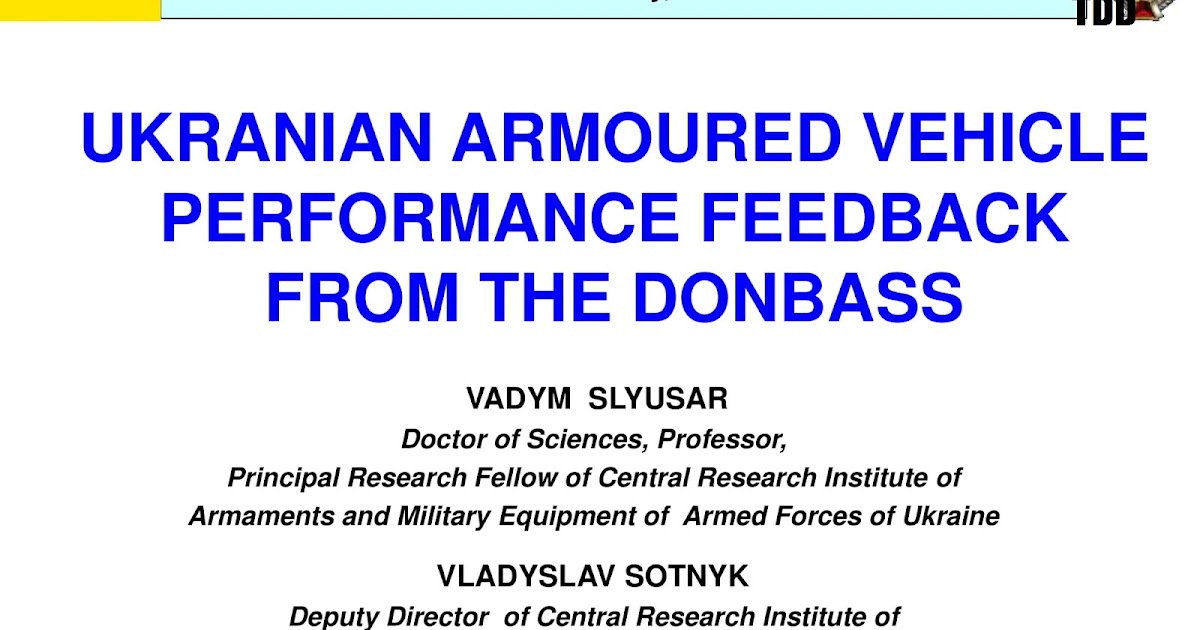
ANALISYS OF COMBAT DAMAGE OF UKRAINIAN ARMY ARMORED VEHICLES AT IAV2020 (FULL PRESENTATION)
The country actually engaged with Russia right now. Fasnicating feedback from Donbass shows huge predominance of losses being from artiller...
(well, need some time before this conflict produces studies, but the rough character of fighting looks not far off)
Some key lesson slides:
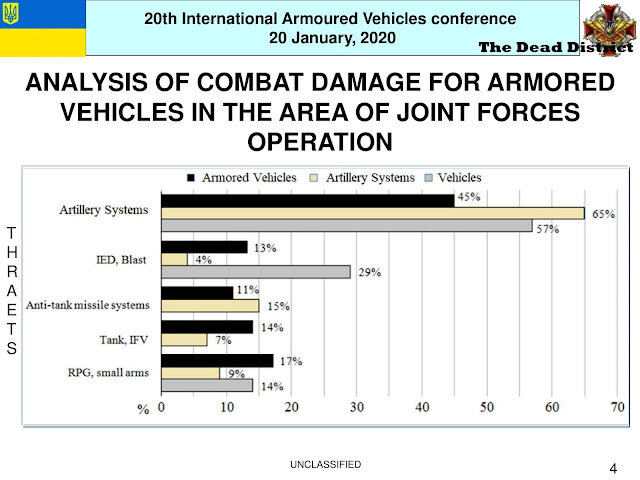
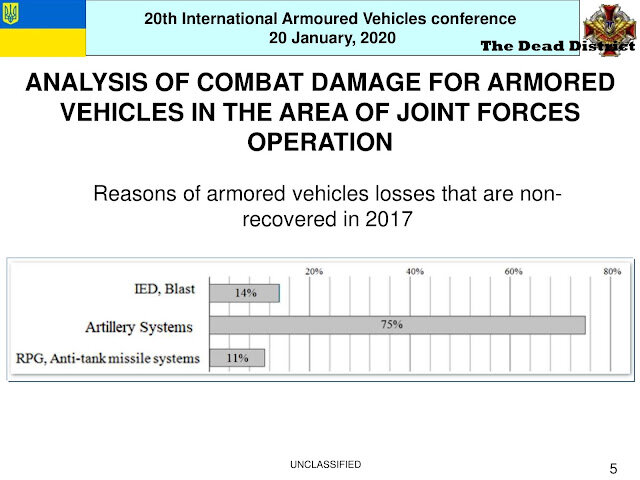
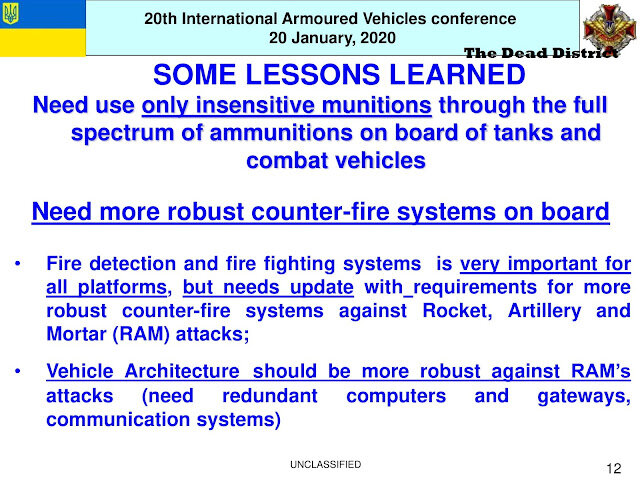
HE frag on top armor: knocked out
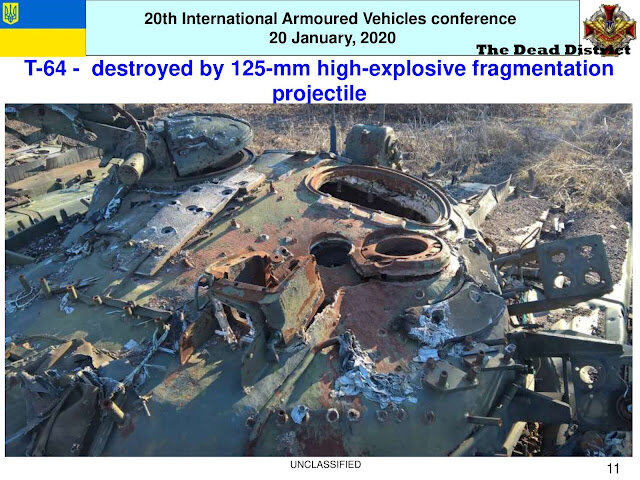
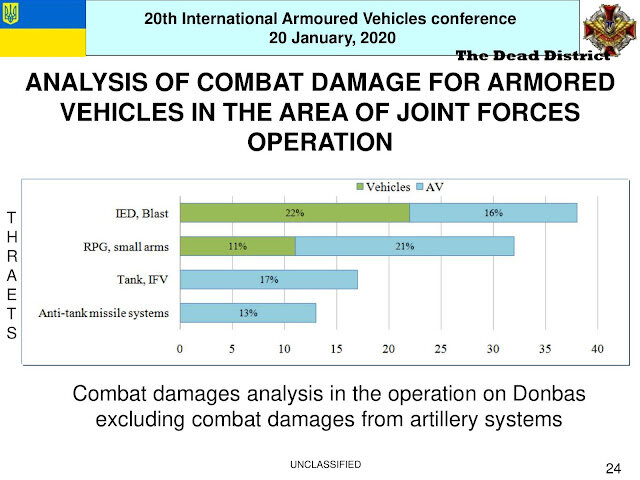
Apparently this was planned a while ago:
